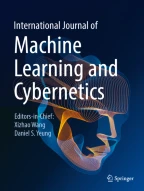Abstract
One of the main problems for effective control of a minimally invasive surgery (MIS) is the imprecision that caused by hand tremor. In this paper, a novel adaptive filter, the least squares support vector machines adaptive filter (LS-SVMAF), is proposed to overcome this problem. Compared with traditional methods like multi layer perceptron (MLP), LS-SVM shows a superior performance of nonlinear modeling with small scale of data set or high dimensional input space. With the LS-SVMAF, we can model and predict the hand tremor more effectively and improve the precision and reliability in the master–slave robotic system for microsurgery. Simulation results demonstrate the effectiveness of the proposed filter and its superior performance over its competing rivals.
Similar content being viewed by others
Explore related subjects
Discover the latest articles, news and stories from top researchers in related subjects.References
Taylor RH, Stoianovici D (2003) Medical robotics in computer-integrated surgery. IEEE Trans Robotics Automat 19:765–781
Mitsuishi M (2007) Medical robot and master slave system for minimally invasive surgery. In: International conference on complex medical engineering. Beijing, pp 8–13
Wang S, Yue L, Li Q et al (2008) Conceptual design and dimensional synthesis of ‘Micro Hand’. Mech Mach Theory 143:1186–1197
Veluvolu KC, Tan UX et al (2009) Adaptive filtering of physiological tremor for real-time compensation. In: IEEE international conference on robotics and biomimetics. Bangkok, Thailand, pp 524–529
Latt WT, Tan UX et al (2008) Physiological tremor sensing using only accelerometers for real-time compensation. In: IEEE International Conference on Robotics and Biomimetics. Bangkok, pp 474–479
Riviere CN, Reich SG, Thakor NV (1997) Adaptive fourier modeling for quantifican of tremor. J Neurosci Methods 74:77–87
Riviere CN, Rader RS, Thakor NV (1998) Adaptive canceling of physiological tremor for improved precision in microsurgery. IEEE Trans Biomed Eng 45:839–846
Ang WT, Pradeep PK, Riviere CN (2004) Active tremor compensation in microsurgery. In: Proceeding of the 26th annual international conference of the IEEE EMBS. San Francisco, pp 2738–2741
Riley PO, Eosen MJ (1987) “Evaluating manual control devices for those with tremor disability”. J Rehab Res Develop 24:99–110
Zhang J, Chu F (2005) Real-time modeling and prediction of physiological hand tremor. In: International conference on acoustics, speech and signal processing. Little Rock, pp V645–V648
Riviere CN, Thakor NV (1996) Modeling and canceling tremor in human-machine interfaces. IEEE Eng Med Biol 15:29–36
Riviere CN, Ang WT, Khosla PK (2003) Toward active tremor cancelling in handheld microsurgical instruments. IEEE Trans Robotics Automat 19:793–800
Suykens JAK (2001) Nonlinear modeling and support vector machines. In: IEEE instrumentation and measurement technology conference, Budapest, pp 21–23
Iplikci S (2010) Support vector machines based neuro-fuzzy control of nonlinear systems. Neurocomputing 73:2097–2107
Chuang CC, Su SF, Jeng JT et al (2002) Robust support vector regression networks for function approximation with outliers. IEEE Trans Neural Netw 13:1322–1329
Suykens JAK, Vandewalle J, Moor BD, (2001) Optimal control by least squares support vector machines. Neural Netw 14:23–35
Suykens JAK, Vandewalle J (2000) Recurrent least squares support vector machines. IEEE Trans Circuits Syst I Fundam Theory Appl 47:1109–1114
Zhang MG, Wang XG, Li WH (2005) Nonlinear system identification using least squares support vector machines. Int Conf Neural Netw Brain 1:414–418
Lin CJ, Hong SJ, Lee CY (2005) Using least squares support vector machines for adaptive communication channel equalization. Appl Sci Eng 3:51–59
Jakubowski J, Kwiatos K, Chwaleba A et al (2002) Higher order statistics and neural network for tremor recognition. IEEE Trans Biomed Eng 49:152–159
Lin CT, Juang CF (1997) An adaptive neural fuzzy filter and its applications. IEEE Trans Syst Man Cybern Part B Cybern 47:635–656
Du QJ, Zhang XY (2007) Kinematics analysis and motion control of radio frequency ablation surgical robot. In: International conference on control and automation. Guangzhou, pp 1890–1895
Nello C, John Shawe T (2004) An introduction to support vector machines and other kernel-learning methods. Publishing House of Electronics Idustry, Beijing
Fung G, Mangasarian OL (2001) Proximal support vector machine Classifiers. In: Provost F, Srikant R (eds.) Proceedings KDD-2001: knowledge discovery and data mining, pp 77–86
Fung G, Mangasarian OL (2005) Multicategory proximal support vector machine Classifiers. Mach Learn 59:77–99
Acknowledgments
The authors would like to thank the editor and reviewers for their very insightful and constructive comments. This work was supported by the National Natural Science Foundation of China under Project U0735003 and 60974047, the Natural Science Foundation of Guangdong Province under Project 8351009001000002 and 9151009001000011, Science and Technology Plan Projects of Guangdong Province under Project 2009B010900051, FOK Ying Tung Education Foundation of China under Project 121061, and High-Level Professionals Project of Guangdong Province.
Author information
Authors and Affiliations
Corresponding author
Rights and permissions
About this article
Cite this article
Liu, Z., Wu, Q., Zhang, Y. et al. Adaptive least squares support vector machines filter for hand tremor canceling in microsurgery. Int. J. Mach. Learn. & Cyber. 2, 37–47 (2011). https://doi.org/10.1007/s13042-011-0012-5
Received:
Accepted:
Published:
Issue Date:
DOI: https://doi.org/10.1007/s13042-011-0012-5
